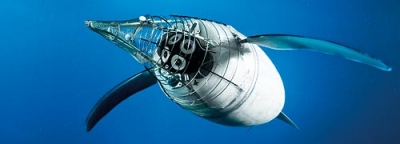 The world we share with other species of nature - all co-existing on the one plant and sharing the same biosphere - has many life skills to share with us - if we can only see and understand. Tom McKeag who teaches bio-inspired design at the California College of the Arts and University of California, Berkeley has nominated his 2009 Tommy Awards.
The world we share with other species of nature - all co-existing on the one plant and sharing the same biosphere - has many life skills to share with us - if we can only see and understand. Tom McKeag who teaches bio-inspired design at the California College of the Arts and University of California, Berkeley has nominated his 2009 Tommy Awards.
He has also decided to give the awards to the creatures that inspired the innovation, rather than the human inventors. This is an amazing new non-destructive application of technology and a whole new world for design.
The penguin, in the strictest biomechanical sense, doesn't really swim underwater, but rather flies. That is, the creature gets both lift and thrust from the action of its flapping, planar wings. It has inspired the latest development in robots highlighted by the German engineering firm Festo AG at the Hanover Messe Trade Exhibition in April.
The Aquapenguin mimics the hydrodynamic body features of the bird and is made with soft material and glass fibre rods, a motor and 3D sonar device by Evologics of Berlin. These allow the bot to swim with great flexibility and avoid collisions with obstacles or other swimmers, important in situations demanding a high degree of flexibility and autonomy. Festo has already developed a commercial product, an industrial arm with a gripper end, based on this technology.

